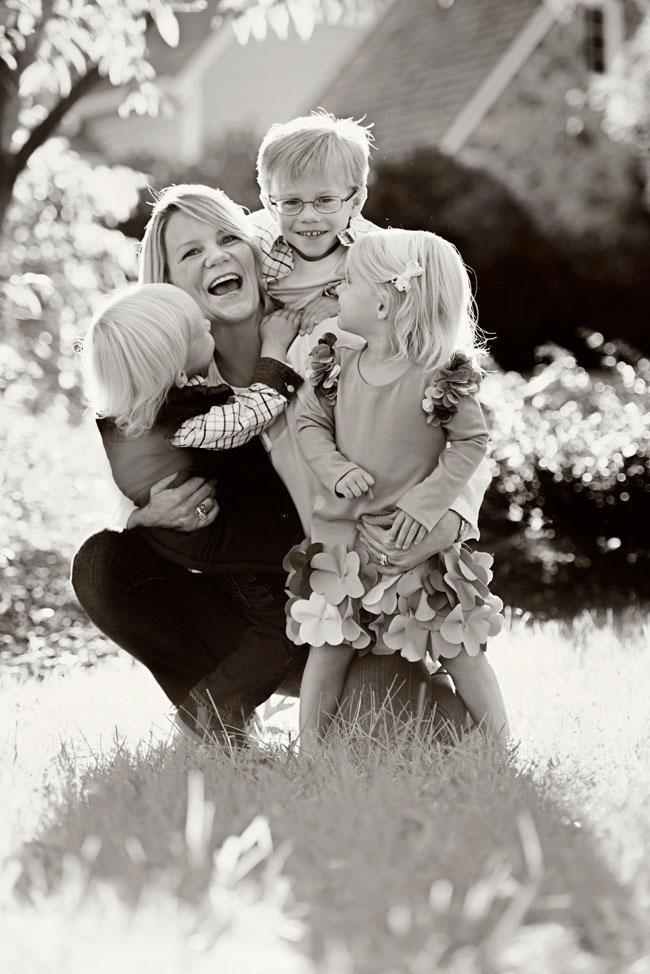When Center Composition can Elevate a Portrait
One of the first pieces of advice a professional photographer will offer a budding new shooter is to ditch the act of placing their subject in the middle of the frame in favor of more visually compelling composition techniques. Some of the more popular composition techniques suggested would include utilizing the rules of thirds, incorporating leading lines, layering the photograph, and more.
But center composition can be rather striking—when used thoughtfully. And adding in one or two more compositional techniques to the overall frame can help a center-composed image stand apart even more. Here are a few things to keep in mind when choosing to utilize a center composition:
1. Make sure that your subject is striking enough to command the frame. Keep in mind, though, that when it comes to portraiture, the subject isn’t always necessarily a person. It can be whatever the photographer feels commands the most attention—sometimes it’s the relationship between individuals; sometimes it’s the spirit or expression or attitude one conveys.
D4S, AF-S NIKKOR 70-200mm f/2.8G ED VR II, 1/1000 second, f/2.8, ISO 320, manual exposure, Center Weighted metering.
In this photograph, the subject is clearly the child’s unbridled joy and laughter. There are also other compositional aspects at play here that further complement a center-composed subject. The clear leading lines, directing the viewer’s attention to the intended point of interest, add to the pull of this image. In addition, the soft, vibrant color of the autumn trees counterbalances the only other pop of color in this image, her clothing.
D810, AF-S NIKKOR 85mm f/1.4G, 1/400 second, f/2.5, ISO 500, manual exposure, Spot metering.
The playful juxtaposition of this little fairy girl and her combative attitude work together here to make this otherwise sweet image a lot more interesting—and worthy of being center composed. In addition, the vertical lines of the pine trees in the background work alongside the bokeh, or the out-of-focus circles of light, to provide a dreamy background, due to the intended shallow depth of field here.
2. Keep the rest of your frame as clean as possible, unless specific elements contribute to your intended point of focus. It can be challenging to keep a center-composed image from looking too busy if there are additional elements in the frame competing for the viewer’s intention. If it takes a little extra time to clean up a scene before photographing a center-composed subject, it’s worth the effort to do so.
D4S, AF-S NIKKOR 85mm f/1.4G, 1/800 second, f/2.8, ISO 1000, manual exposure, Center Weighted metering.
Because of the striking (but potentially overpowering) light and color in the background of this photograph, it was important to manage a couple of elements here. The first thing was to eliminate any additional distractions through intentional framing and some actual cleaning up of the scene (ie., ensuring that a distracting bench was just out of frame and moving some tree debris before the photograph was shot). The second consideration was to separate the subjects from the background and shoot with a very shallow depth of field, to ensure they stood out as much as possible.
D800, AF-S NIKKOR 14-24mm f/2.8G ED, 1/320 second, f/3.5, ISO 250, manual exposure, Spot metering.
The found markings in this streetscape were a whimsical addition to this otherwise uncluttered shot. The focus here is on the exuberant feel of this complemented by the vibrancy of the colors in frame. In this case, the additional elements in the photograph only enhanced the focus on its subject.
3. Incorporating natural framing can help isolate your intended point of interest from its surroundings. Natural framing is any element that, well, naturally frames your subject—such as trees and branches, doorways and archways, and curved objects. Thoughtfully choosing to bring these elements into your frame can often further enhance focus on your main subject.
D800, AF-S NIKKOR 70-200mm f/2.8G ED VR II, 1/125 second, f/2.8, ISO 100, manual exposure, Matrix metering.
D4, AF-S NIKKOR 70-200mm f/2.8G ED VR II, 1/160 second, f/4.5, ISO 640, manual exposure, Matrix metering.
When all is said and done, remember that composition is, after all, simply a form of organization. Take the time to organize your frame as thoughtfully as possible, and you’ll create an extraordinary way for you to showcase what you care about most.












